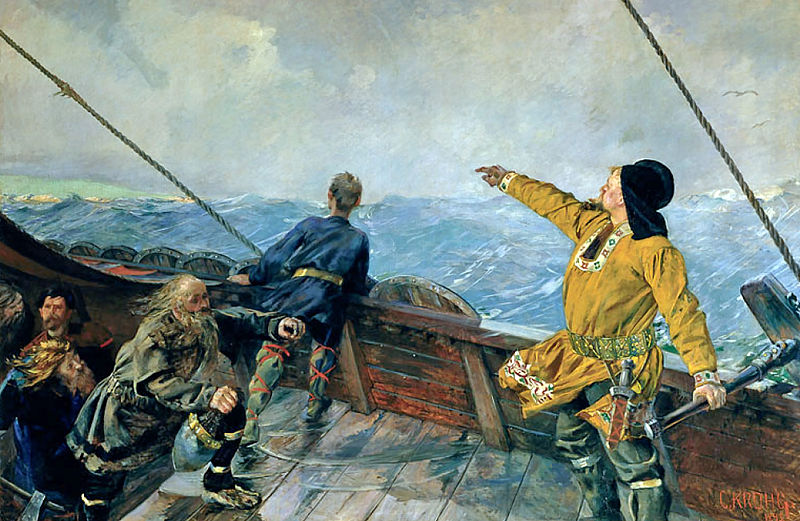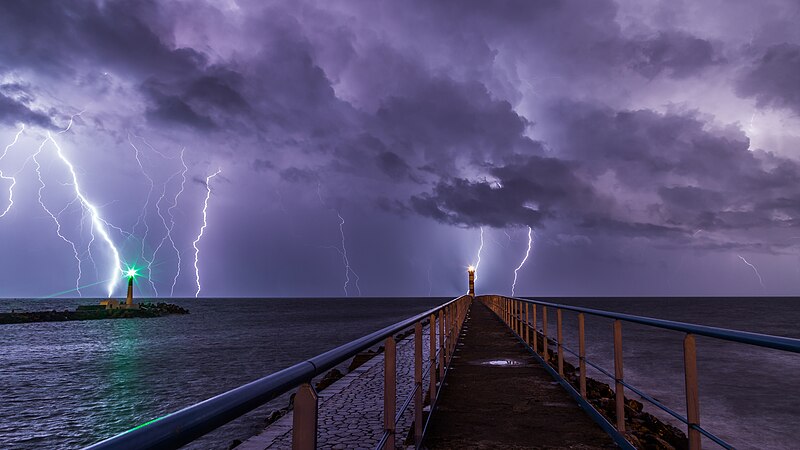By LUDWIG KLEIN | The Vikings who settled on Greenland and Iceland in the Middle Ages and their traditional tales were the focus of Helge Ingstad’s attention: the Norwegian was one of the first to take the nautical information from the old Vinland Sagas seriously and thus discovered L’Anse aux Meadows (The Bay at the Meadows) at the northern tip of the island of Newfoundland in 1961. Greenland served them as a starting point for further explorations in nearby North America. On the basis of ground finds, he was able to prove beyond doubt a settlement in north-eastern Canada from the early 11th century, thus proving the discovery of America for the first time centuries before Columbus [Link]! The final disappearance of the Greenlandic Vikings in the 15th century is unexplained. However, there were waves of emigration as early as the 14th century, as reported by medieval chroniclers.
Note: Ingstad’s adventures with reindeer-hunting tribes in the Arctic North (The Land of Feast and Famine), his search for free Apaches in the Sierra Madre in Mexico (The Last Apaches) in the 1930s and, of course, his book on the discovery of Viking settlement in Canada (The Viking Discovery of America) are a special reading pleasure!
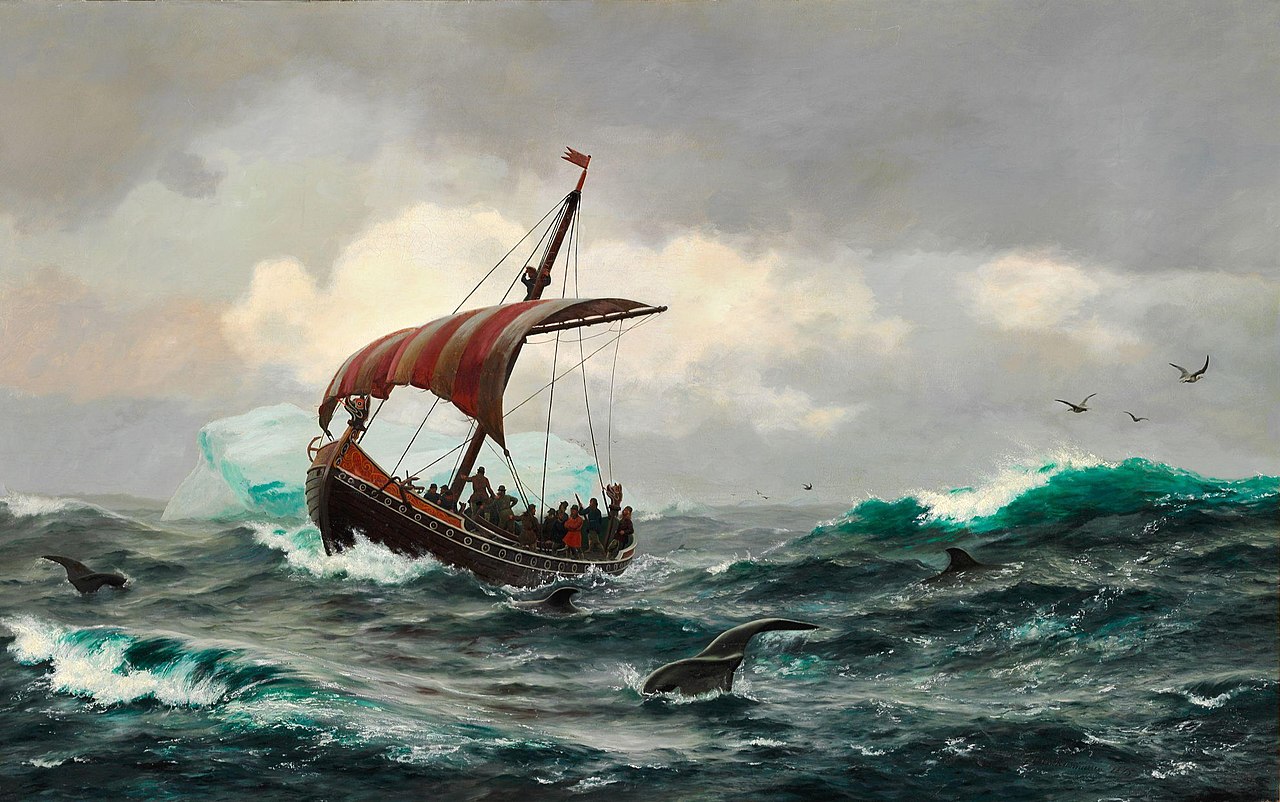
In 986, according to the saga of Erik the Red, Vikings from Iceland and Norway came to Greenland with 14 ships. They settled in the relatively mild southwest of the island, whose fjords resembled the familiar Scandinavian homeland. There were fat pastures for the cattle, trees and even barley could be grown up to the 70th parallel. This was used to make either porridge, the typical everyday food of the Middle Ages, or flour for bread. In the 14th and 15th centuries, the climate in the North Atlantic deteriorated and in Iceland, during winter famines, “the old and the weak were pushed off the cliffs” [link]. Settlement density remained low, with around 3000 Vikings living on the island.
Why did you settle on Greenland in the first place, was it just for cultivable land and pasture for cattle? What kind of desirable trade goods were there?
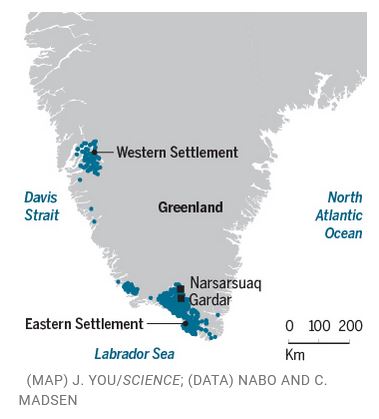
The treasure troves of the Arctic Ocean
Walruses live in the Arctic Ocean and, among other places, along the coasts of Greenland as far as Hudson Bay. On Iceland, they were exterminated early on by the Vikings for their coveted ivory: in 1327, a package of 802 kg of walrus teeth was worth 780 cows or 60 tonnes of dried fish, as a Norwegian researcher calculated using old church records [link]. These were used to carve luxury goods for the courts of princes and kings, such as the chess pieces found on the Scottish island of Lewis.

The horn of the mystical unicorn had almost immeasurable value; at times it was weighed out at ten times its weight in gold. Kings were constantly afraid of poison attacks by rivals for power. The horn of the unicorn, as the embodiment of innocence and purity, was supposed to react by sweating through its abhorrence of poison, so the king’s food was touched with it before serving. In addition, there is a sacral significance; the church fathers equated the hunting of the unicorn by a virgin with the incarnation of Christ through Mary. We smile at such comparatively innocent ideas of our ancestors, at the same time absurd ideas are believed by parts of the population today. The narwhal is only found in polar waters and particularly common around Greenland and was hunted by Vikings or they traded the coveted tusks of Inuit.
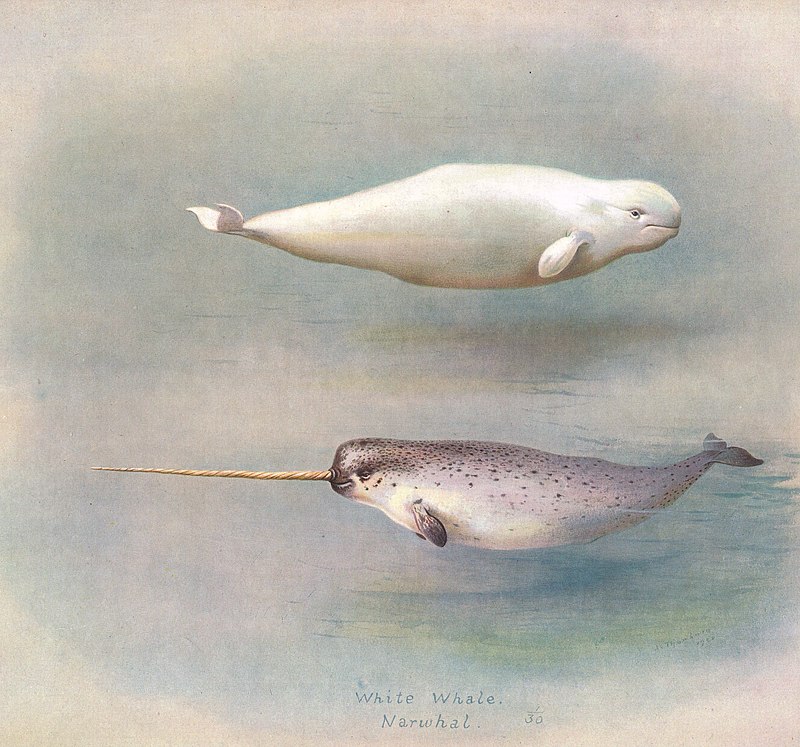
Based on the shift in nitrogen and carbon isotopes in the bones of deceased Vikings, researchers were able to prove that they adapted to the deterioration of the climate and fed primarily on the meat of marine animals. The discontinuation of cereal cultivation in the 14th and 15th centuries need not have posed an existential threat. Moreover, there continued to be consistently protected and climatically particularly favoured fjords, as evidenced by the Quinngua Valley in southern Greenland, where a small forest still exists [link]. The decline in the market price of ivory due to imports from Russia (mammoth) and Africa from the 14th century onwards finally endangered the foundations of the Greenlandic economic system [link].
The last Greenlander
In 1540, a German merchant ship was blown off course and drifted into a fjord on the west coast of Greenland. On an island off the coast, the sailors saw half-ruined houses and sheds like those on Iceland. In front of them lay a man wearing a woolen cap with his face on the ground. His clothes were made of sealskin and wool, and beside him lay a scuffed knife. He was the last settler of whom we have news, we know nothing about his fate [Link].
Did the Greenlanders simply retreat back to Norway and Iceland as their situation deteriorated due to the decline in the market price of ivory and the changed climatic conditions? Helge Ingstad suspected emigration to North America. But is this assumption plausible? Were there other settlements of Europeans in North America and is there evidence of Viking artefacts? Or did their disappearance have entirely different causes?
In Part II on Disappearance of the Greenlandic Vikings, we look at the evidence for an emigration of (part of) the Greenlanders to North America.

